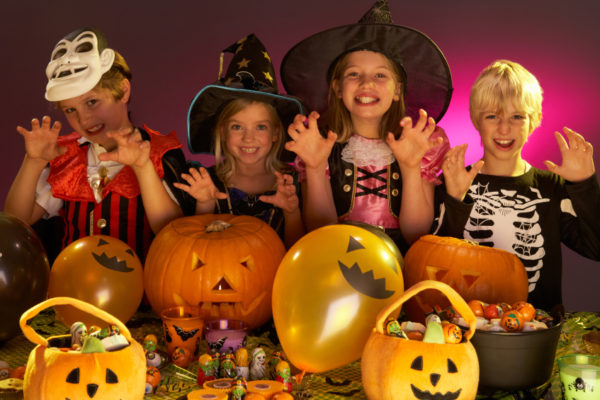All over my neighborhood, there are ghosts, skeletons, tombstones and jack-o-lanterns. Some displays are cartoonish, others are gory, but they all have a common theme. They are poking fun at death.
Psychology researchers say that humans are probably the only species on Earth capable of contemplating its own mortality. As a result, we need to have mechanisms to allow us to deal with this kind of existential dread. The Terror Management Theory proposes that people do things such as cleave to the traditions of their culture to keep the fear of death at bay.
And Halloween plays a role in that. Each year as the nights start to grow shorter, we take the symbols of death and seize control of them by manipulating them into displays that we create. For one night, we control death rather than the reverse.
Anyone who has ever suffered the loss of a loved one knows that real death is not a joking matter. The grief that comes with death can lay out even the mentally strongest person for days, weeks, or months. Indeed, in recognition of the long-lasting power of death, Jewish tradition requires people mourning a parent to say a prayer in the company of a quorum of other people for 11 months and to mark the anniversary of that death every year after that.
Yet, on Halloween, we take this most serious of topics and hold it up for ridicule.
And this can be helpful. It gives us all temporary power over something that many people fear. It provides opportunities for release from the anxiety and sadness that death can bring. It also creates chances for children and adults to think about — and perhaps even talk about — what death means to them.
There is a deep lesson here.
We live in an era in which there are many serious issues that confront society. There are divides between rich and poor. There are near constant reports of racism, sexism and homophobia. Religious tensions are on the rise, with increasing reports of anti-Semitic and anti-Islamic actions.
These issues are all as serious as death.
Unlike death, though, we generally avoid jokes relating to these issues. In part, that reflects a terrible history of jokes whose humor was based on denigrating people on the basis of race, ethnicity, sex and sexual orientation. These jokes played on stereotypes that perpetuated negative beliefs about others and marginalized people who did not fit the mainstream.
These offensive jokes rightly have no place in society. And the reason for that is at the heart of Halloween. Death has all the power in our lives. No matter what we do, we will not escape it. And so, we speak our truth to power with humor and sometimes ridicule. We do not make fun of the powerless on Halloween. And generally speaking, ridiculing those with less power than we have is cruel.
Poor uses of humor in the past are not a good reason to dispense with it altogether. Humor is an important coping mechanism. It allows us to hold terrifying concepts at arm’s length and analyze them. It gives us some control over situations we find frightening.
It also creates the potential for moments of bonding. When several people “get” the same joke, they recognize the commonality in their worldview that enabled that combination of joy and surprise that makes people laugh. And humor is enhanced by embedding it in transgressive or uncomfortable topics, which is why there is so much sexual and scatological humor.
All this suggests that we should be on the lookout for opportunities to skewer our most taboo topics by sending up the powerful in order to expose the roots of our fears. We should do this with an eye toward creating commonality rather than difference. It is valuable to recognize that there are uncomfortable and frightening topics that reflect facets of life that are deeply human. When we lampoon them, we can state truths that would be hard to say directly. And we open up avenues for conversation that can provide an invitation to discuss difficult topics.
So, as we look at the Halloween displays this year, see them as an invitation to face fears — with humor.
Art Markman is the Annabel Irion Worsham Centennial Professor of Psychology and executive director of the IC2 Institute at The University of Texas at Austin. He is the author of several books including “Bring Your Brain to Work.”
A version of this op-ed appeared in the Houston Chronicle, San Antonio Express News, and the Corpus Christi Caller Times.




